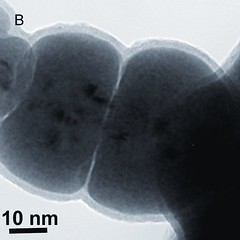
Reports are all over the Internet about a recent study using nanoparticles as additions to vaccines that target lymph nodes. The study has found that, at least in mice, these nano-loaded treatments can boost antibody- and immune responses against lethal infections. The Duke University team that did the study says their loaded nanoparticles closely mimic the structure and actions of mast cells—those little guys that naturally help us fight infection. They say the fact that they can load the particles with different combinations of cytokines means they can steer the direction of the immune response.
Sounds very promising indeed. My first thought was, this is in mice. How well does mouse research translate into human treatments? First, I learned that the mouse has 99% of the same genes as we humans. Then, too, scientists already have a huge selection of sophisticated tools for working with mice. Plus, the mouse’s tiny size makes it affordable for large studies.
Then I learned that lots of research studies conducted with mice have not translated at all well to humans. A global cross-discipline (academia, industry, clinical) group convened last year to discuss the whole mouse-as-model issue and came to some conclusions. The most significant of these, for our purposes here, seems to be that mice studies have been successfully translated mostly to validate drug targets and to determine safe and effective doses of combination treatments in humans. Read the entire (slightly windblown) mouse model conference report here.
Another example of successfully using nanoparticles as targeted carriers is in treating prostate cancer in mice. Tumors
shrank significantly, and treated mice survived much longer than untreated, and longer, too, than even those treated with the same drug but not delivered with the targeted nano carrier. And in this study they aimed to have the targeted drugs bypass both healthy tissue and the immune system. It’s wonderful that such precision is possible.
But meanwhile, because I regularly research information about the very long time—often decades—it takes for asbestos exposure to show up as deadly disease in human beings, I continue to worry about the long-term effects of manufactured nanoparticles being injected into living creatures. I sincerely hope scientists are planning long-term followup studies of mice treated with nanoparticle-boosted drugs and vaccines. Before we head towards human clinical studies, let’s make sure the mice didn’t get saved to live another day and then die of complications from having nanomaterials delivered directly into their bodies.

